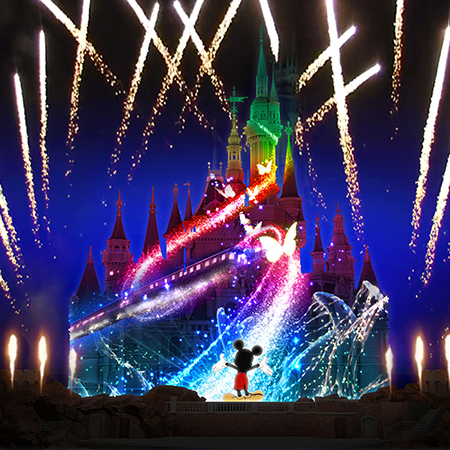|
News Days before the opening ceremony of the Rio 2016 Olympic Games, the first world record attempt will be made in the city – but it won't be on the running track or in the swimming pool It will be on a huge wall in the city's formerly run-down port area, which has been rejuvenated ahead of the Games Brazilian graffiti artist Eduardo Kobra is attempting a Guinness World Record for the largest mural created by one artist Setting what could be a new global benchmark with his spray cans and kaleidoscopic colours, Kobra is welcoming the world to Rio de Janeiro with a 190-metre-long artwork The mural will be a key part of the 'Olympic Boulevard' (Photo: Rio 2016/Paulo Mumia) At 15 5 metres tall, the massive work of art is nearly 3,000 square metres in size (2,945 sq m) and could be recognised as the largest of its kind in the world “I was really happy I got to display my work here in Rio de Janeiro,” said the 40-year-old muralist from São Paulo “This was something I have wanted to do for a long time ” Kobra is also one of 13 artists who designed an official Olympic poster for the Rio 2016 Games The mural 'Ethnicities', or Etnias as it’s titled in Portuguese, will be unveiled on July 30 About 100 gallons of white paint, 1,500 litres of coloured paint and at least 3,500 cans of spray paint were used to complete Kobra’s composition, which shows the faces of five indigenous people from distinct nations on five continents Kobra and his team use hydraulic lifts to reach the higher parts of the wall (Photo: Rio 2016/Paulo Mumia) The muralist and a team of four guest artists have been at work at least 12 hours a day for the past two months, painting the exterior wall of a two-storey, cinder-block warehouse near the port where an extensive revitalisation is underway in the city centre The artists relied on seven lifts and marked a grid pattern on the whitewashed concrete to aid in the completion of their work (Photo: Rio 2016/Paulo Mumia) The street where the mural is being created will be part of the Olympic Boulevard, a huge 'live site' stretching about three kilometres and offering Olympic coverage on big screens, three stages with live music, street art performances, nightly firework displays, food trucks and activities for kids The centre-piece of the revitalised region is Praça Mauá, which hosts spaceship-like Museu do Amanhã (Museum of Tomorrow) in what has become an expansive, waterfront square, accessible by a new tram system, known as the VLT is Portuguese A VLT station is located in front of Kobra's mural (Photo: Rio 2016/Paulo Mumia) The artist said he went to great lengths to accurately and respectfully represent indigenous people in his work “The five characters represent the five continents – the concept was based on the five Olympic Rings,” said Kobra in a phone interview in Portuguese “These are the indigenous people of the world The idea behind it is that we are all one “This is the first time I have worked with ethnic people We’ve all got the same origins so we have to get along, not only during the Olympic Games but always We should always stand for world peace ” ‘We are all connected’ Kobra said 'Ethnicities' builds on the themes of an ongoing project, 'Visions of Peace' or Olhares da Paz, an international series that features Nelson Mandela, Martin Luther King Jr , Gandhi and Mother Teresa, among others “We’re living through a very confusing time with a lot of conflict I wanted to show that everyone is united, we are all connected,” said Kobra Kobra works on the detail of one of his subjects (Photo: Rio 2016/Paulo Mumia) If Kobra is accepted by the Guinness Book of Records, his Ethnicities will nearly double the size of the current record-holding entry by Mexican artist Ernesto Rocha, whose Mazatlan mural completed in 2009 measures 1,678 square metres “I’m motivated by challenges,” said Kobra “This building was totally abandoned My team had to paint it all white and even recover some parts of it This was a collaboration We ended up spending more than we got commissioned for This wasn’t about money, we really wanted to do this ” Who is Kobra? A resident of Brazil’s largest city, São Paulo, Kobra has left his mark in Tokyo, Dubai, London, New York and beyond Known primarily by the signature that graces his work, Kobra uses a geometric, quilted pattern of bold colours to create massive portraits of citizens, celebrities and political figures such as John Lennon, Bob Dylan, Tupac Shakur, the Dalai Lama, and even Yoda, depicted in Miami holding a road sign that declares “Stop Wars” Creating canvases from urban and industrial facades on the sides of smokestacks, apartment blocks and parking garages, Kobra’s early days were more notorious than notable as he tagged civic walls in the distinct, brutal, cryptic and skyscraper-high style of Brazil’s pichação graffiti artists “Everything I’ve learned, I learned in the streets,” he said Today Kobra has worked in more than 20 countries and created more than 30 projects in the United States alone After he was arrested for vandalism in his youth, a judge recognised his emerging talent and sentenced the young street artist to paint the exterior of the police station “In Europe, in the United States and even in Brazil, it can be hard to get permissions when it comes to graffiti As surprising as it may sound, the place where it is easier for me to work is in the United States ” After Etnias, Kobra will head to Cincinnati, Ohio, in the USA, to work on a mural of astronaut Neil Armstrong Muralist Eduardo Kobra drew on the five Olympic Rings as inspiration for the five indigenous figures of his 190-metre-long mural, titled "Ethnicities," located in Rio de Janeiro “For people who have taken a walk to the mural, the first character they will encounter is an African figure,” he said in Portuguese “She from the Ethiopian tribe called Mursi ” Photo: Rio 2016/Paulo Mumia Kobra’s next figure is also a woman “She is part of the Kayin, from Thailand, and she represents Asia,” said the artist Photo: Rio 2016/Paulo Mumia “This character represents the Americas, and most specifically Brazil,” said Kobra “He is a member of the Tapajós ” Photo: Rio 2016/Paulo Mumia In representing Europe with in the fourth figure, Kobra depicted a Supi man Photo: Rio 2016/Paulo Mumia Muralist Eduardo Kobra drew on the five The fifth figure is a Huli man from Papua New Guinea Photo: Rio 2016/Paulo Mumia A fish-eye lens captures the full scope of the 190-metre-long mural, "Ethnicities" by Eduardo Kobra Photo: (Photo: Rio 2016/Paulo Mumia) |
‘We are all connected,’ says street artist creating record-breaking mural for Rio 2016 Games
August 21, 2016
VIEWED: 0
Recommended Products
see all-
HKIA to Zhongshan Ferry E-Ticket|CKS
HKD 159 + Book -
Shanghai Disneyland E-Ticket
HKD 325 + Book








